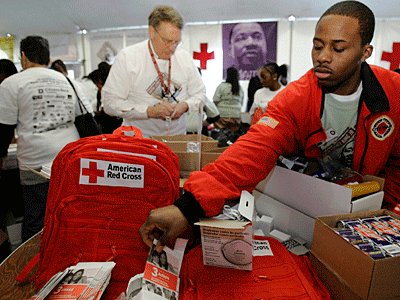FOSTERING GOODNESS
A Teachers’ Guide to Promoting Adolescent Moral Development
EFFECTIVE ACTIVITIES
SERVICE LEARNING
What it is: Service learning involves developing insight about a topic by volunteering in the community.
Outcomes: Volunteering during adolescence increases the likelihood that an individual will volunteer later in life (Astin et al 1999; Atkins, Hart, & Donnelly, 2004; Hart, Donnelly, Youniss, & Atkins, 2007; Pratt et al., 2003; Reinders & Youniss, 2006; Youniss & Yates, 1997).
NEAR-PEER MENTORING
What it is: Mentoring involves pairing a younger or less-experienced individual (mentee) with an older or more experienced individual (mentor) who provides guidance to the mentee. Near-peer mentoring involves two youths who are different enough in age (at least two years) to allow for one individual to be seen as older and wiser, and thus, to assume a mentoring role. The purpose of near-peer mentoring relationships is for the individuals to cultivate friendship (Karcher, 2005).
Outcomes: Mentees report a greater sense of connectedness to school and peers (Karcher, 2005a; Bowman & Myrick, 1987; Stoltz, 2005), more confidence in their abilities (Stoltz, 2005; Tomlin, 1994), and better social skills (Karcher, 2005). Mentors report a greater sense of connectedness to school (Karcher, 2006; Stoltz, 2005) and community (Hansen, 2006), stronger communication skills (Noll, 1997; Hansen, 2006), a heightened sense of responsibility (Hansen, 2006), higher moral reasoning skills, and higher levels of empathy (Ikard, 2001).
Why it works: Near-peer mentoring programs benefit mentees by providing them with a resource for social support that can address needs that adult mentors may not be able to fulfill. For example, near-peer mentors are close to the mentee in age, and therefore, may be able to give more relevant and realistic advice about how to successfully maneuver the transition from middle to high school. On the other side, these programs benefit mentors by enabling them to practice their communication skills, demonstrate responsibility, feel valuable, and to gain confidence in their ability to help others.
How to apply it: Near-peer mentoring works best when: (a) students are matched on a one-to-one basis; (b) when there is at least a two-year gap between the mentor and mentee’s ages; (c) there is ongoing mentor training, (d) students are given structured activities; (e) there are clear expectations for how long the mentoring will last, how often they meet, and the duration of meetings; (f) there are structured activities for mentors and mentees to perform; and (g) parents are involved (DuBois, Holloway, Valentine, & Cooper, 2002; Karcher, 2005). Visit this website for more details on selecting and matching students, training mentors, structuring activities, and obtaining feedback from mentees and mentors: http://educationnorthwest.org/sites/default/files/building-effective-peer-mentoring-programs-intro-guide.pdf.




Updated 2015
Why it works: Volunteering leads individuals to take the perspectives of the people who they are helping, which can lead to increased empathy, tolerance, moral reasoning, and a sense of personal responsibility for helping others. Volunteering also enables individuals to build social relationships with people in the community (including people who could function as moral mentors), to engage in conversations with those people about moral issues, to form habits of volunteering, to come to view helping others as an important part of who they are, and to feel confident in their ability to make a difference in their community.
How to apply it: Encourage students to volunteer in their community. It is important that the volunteering activity is relevant to the course or curriculum, has clear learning objectives, is challenging for the youth, and addresses a real community need; and that the student be able to choose the activity/organization, performs the activity for at least 12 weeks, and spends time critically reflecting upon what they learned through this experience and what it means for their life (Astin et al., 2000; Moore & Allen, 1996; Skinner & Chapman, 1999). Visit the following website for a more detailed step-by-step guide for implementing service learning projects, examples of projects, reflection questions, and other resources: http://www.goodcharacter.com/SERVICE/primer-1.html.